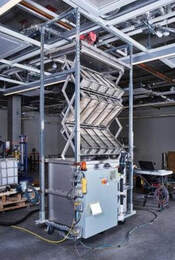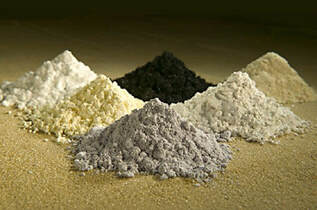The Earth's atmosphere has an excess of carbon dioxide (roughly 420 parts per million), driving global temperatures well above pre-industrial levels and intensifying droughts, wildfires, and other natural disasters. Dramatic steps need to be taken to remove the equivalent of three decades of CO2 - not to mention reduce the amount that is added as well.
Carbon capture is one method of reducing this toxic greenhouse gas and it has many technological forms, from sequestration to utilization.
This issue of Energy Today examines a range of next-generation carbon capture solutions, from "wacky direct-air-capture devices" to ambitious attempts to "tweak" photosynthesis so that it is more efficient for the global carbon era. In addition, Members of the Society have privileged access to an exclusive article about the rare earth metals that are required for many carbon capture technological innovations.
Carbon capture is one method of reducing this toxic greenhouse gas and it has many technological forms, from sequestration to utilization.
This issue of Energy Today examines a range of next-generation carbon capture solutions, from "wacky direct-air-capture devices" to ambitious attempts to "tweak" photosynthesis so that it is more efficient for the global carbon era. In addition, Members of the Society have privileged access to an exclusive article about the rare earth metals that are required for many carbon capture technological innovations.
Recommended Articles
|
Klaus Lackner's Once Wacky Idea
For the last three decades, Klaus Lackner has worked tirelessly on the development of a direct-air-capture device that sucks carbon dioxide out of the air. He says he's almost perfected the system. Almost? See also: He Frac'ed Until It Paid Off |
|
The Potential Pitfalls of Sucking Carbon
from the Atmosphere Some scientific critics find Lackner’s projections not just wrong but also dangerous; they fear that claiming direct air capture is an affordable and effective solution reduces the pressure to slash emissions and understates the serious limitations of the technologies. See also: We'd Rather Quit OPEC |
|
What Does 45Q Mean for CarbonTech?
Last year, Congress slipped a new tax credit for carbon capture technologies into a spending bill that was passed with very little review in order to avert a government shutdown. Despite its suspect origins and major gaps, the tax credit - known as 45Q - quickly gained traction and continues to attract bipartisan support. See also: Oil Diplomacy |
|
Plants Are Great At Storing Carbon
Many strategies aimed at reducing carbon in the atmosphere involve unlikely technological innovations or huge shifts in human behavior. But what if we could also improve photosynthesis so that plants consumed more carbon dioxide than we emitted? It’s a demand-side approach to reducing the threat of climate change, and it’s beginning to gain extra research attention. See also: BofA Builds Green Revolution |
|
The Fuzzy Math of Carbon Capture
Most carbon capture/removal technologies remain largely unproven. Companies like Global Thermostat are pioneers, trying to make technologies like direct air capture financially viable. Are these technologies ready for prime time or are we just kidding ourselves? See also: Climate Math |
|
A Precarious Proposition:
Carbon Capture and Rare Earth Metals Many carbon capture technologies require unsustainably large amounts of rare earth metals. |
News from the Society
|
The Editors of Energy Today welcome submissions of original articles for publication consideration. Please contact the editorial staff by email with questions or attach the proposed article as a Word document.
|
















